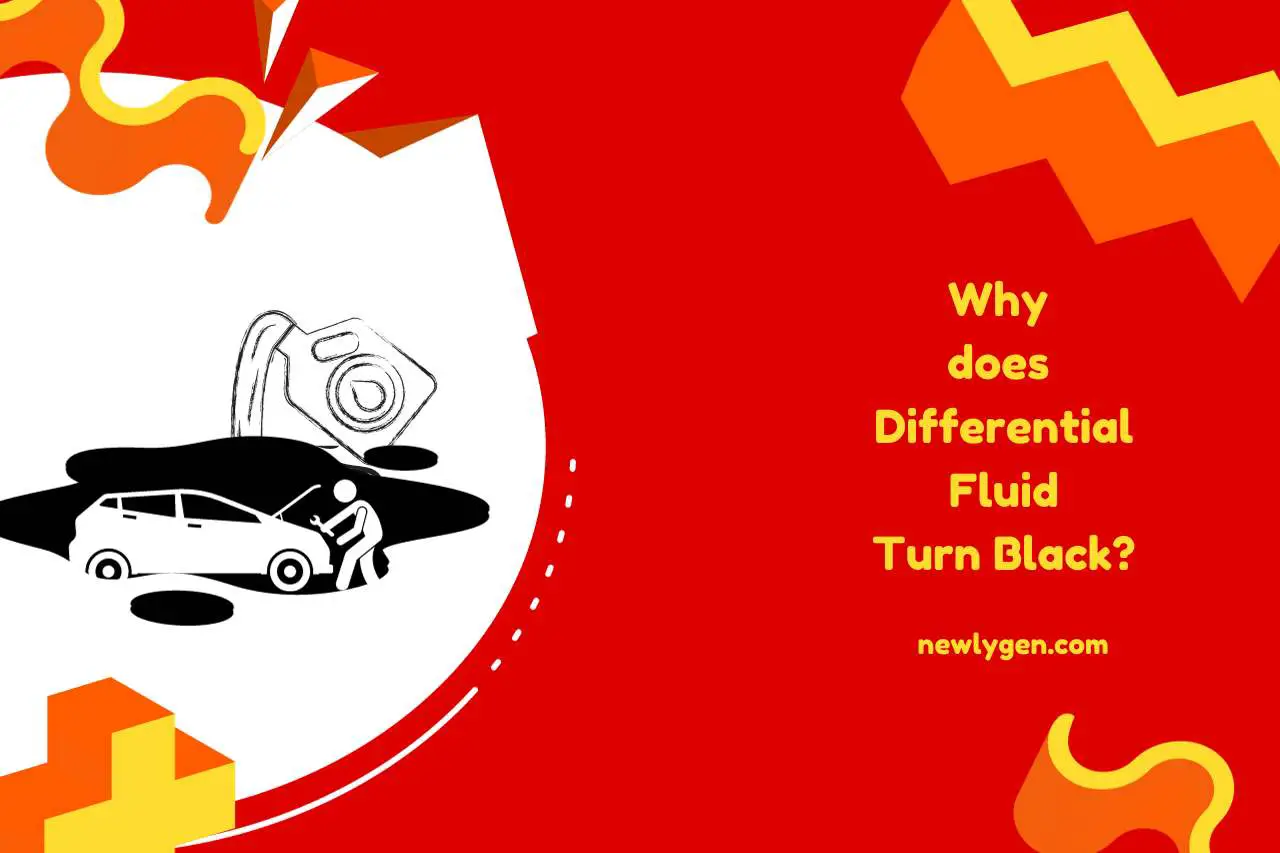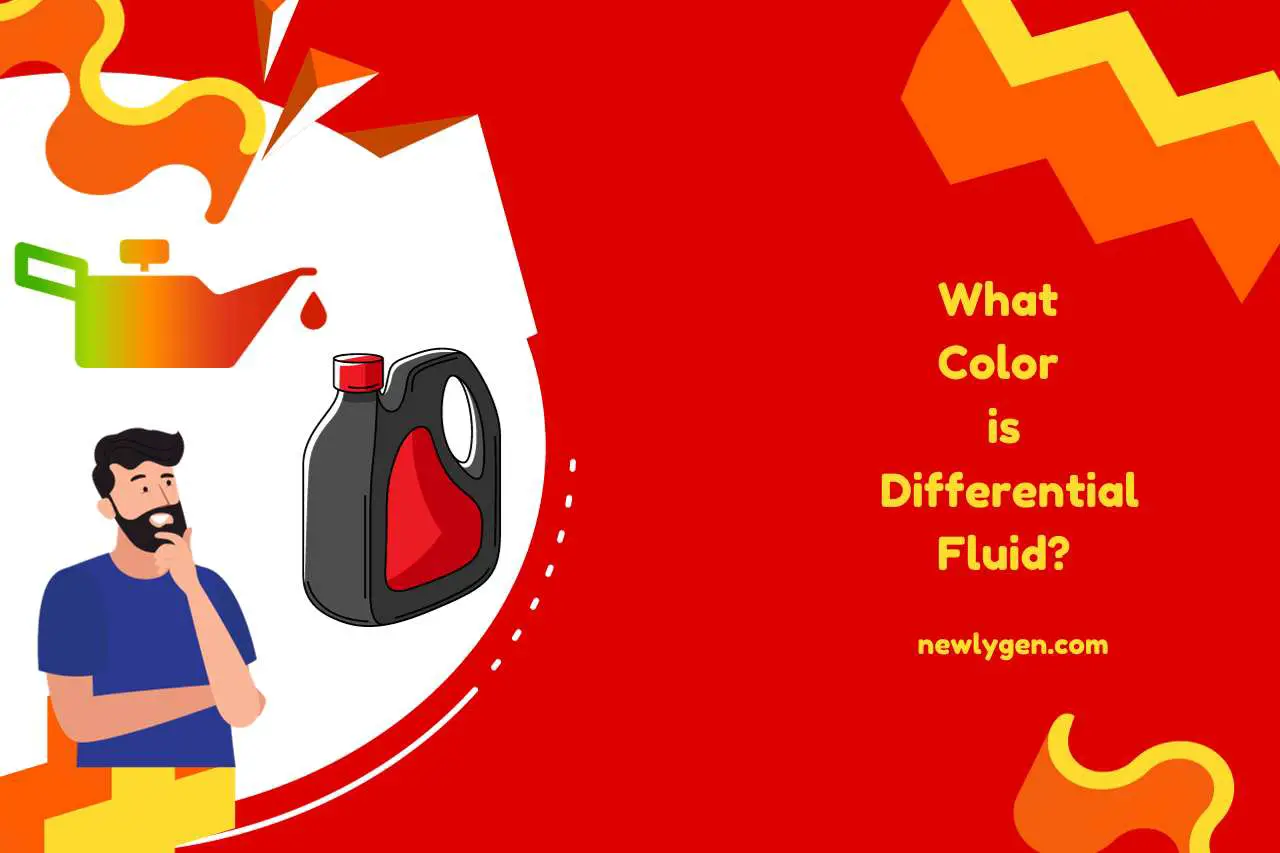What Color is Differential Fluid? Decoding the Shades!
Ever found yourself wondering, ‘What color is differential fluid?’ Well, you’re not alone! It’s not just about the color, but what it tells us about our vehicle’s health. Delve with me into the intriguing world of differential fluids. We’ll decode the different shades, understand what they signify, and learn how to spot signs that it’s time for a change. Ready to become a differential fluid detective? Let’s get started!
What Color is Differential Fluid?
The typical color of fresh differential fluid is a clear amber or light brown hue. As the fluid ages and accumulates debris, it may darken.
Differential fluid, an essential component in vehicles, ensures smooth operation of the gears within the differential. Its primary function is to reduce friction and dissipate heat. Let’s delve into some finer points:
- Appearance Over Time: With prolonged use, the differential fluid can undergo color changes. It might transition from its original clear amber state to a darker brown or even a black shade, indicating contamination or wear.
- Consistency and Contaminants: A healthy differential fluid maintains a consistent texture. If you notice metallic particles, a milky appearance, or a burnt odor, it’s a sign that the fluid has deteriorated or water has intruded.
- Frequency of Inspection: Regularly checking the color and consistency of the differential fluid can provide insights into its health. A significant deviation from the fresh amber tone might indicate the need for a fluid change.
- Importance of Timely Replacement: Using discolored or contaminated differential fluid can lead to reduced performance, increased wear, or even potential damage to the differential components.
Different Types of Differential Fluid Colors and Their Meaning
Different colors of differential fluid can signify its condition and potential underlying issues. Let’s explore these variations and what they typically indicate:
- Clear Amber or Light Brown: This is the hue of fresh, new differential fluid, indicating that it’s in optimal condition and functioning as intended.
- Dark Brown or Black: Over time and usage, differential fluid can darken. A deep brown or black color suggests aging, potential contamination, or the need for a change. However, an unusually rapid color change might hint at excessive wear or heat generation.
- Milky or Cloudy: A milky appearance usually indicates water contamination, which can occur due to condensation or a compromised seal. This can severely affect the fluid’s performance and potentially damage the differential components.
- Metallic Sheen: If the fluid has a metallic shimmer, it’s often a sign of metal particles from the gears or bearings, indicating excessive wear and the need for immediate attention.
- Burnt Smell with Dark Hue: A burnt odor coupled with a dark color can be a warning of overheated fluid, suggesting that it’s lost its lubricating properties.
What Color is Differential Fluid Leak?
When observing a differential fluid leak, the color usually manifests as a dark brown or black hue. This is especially true if the fluid has been in the vehicle for some time, accumulating contaminants and wear debris.
Upon noticing a leak, it’s vital to assess its characteristics:
- Consistency: Differential fluid is typically thicker than engine oil or transmission fluid, so a dense, dark leakage can point to the differential.
- Location: A leak at the rear or center area of the vehicle, near axles, is often associated with differential fluid.
- Odor: This fluid has a distinct, somewhat sulfurous smell, setting it apart from other automotive lubricants.



Why does Differential Fluid Turn Black?
The reason differential fluid turns black is due to the accumulation of metal particles and contaminants over time. As gears interact, they wear down, releasing minuscule metal fragments into the fluid.
Understanding this color change is crucial:
- Wear and Tear: The primary culprit is the continuous grinding of gears, leading to metal shavings mixing with the fluid, darkening it.
- Heat: Consistent heat exposure can cause the fluid to degrade faster, contributing to its darkened state.
- Contaminants: Over time, dust and external pollutants can find their way into the differential, affecting the fluid’s purity and color.
How Do I Know If My Differential Fluid is Bad?
Determining if your differential fluid is bad involves inspecting its color, consistency, and odor. If the fluid is excessively dark, has a burnt smell, or feels gritty, it’s likely time for a change.
To dive deeper:
- Color: Fresh differential fluid is often a clear amber color. Over time, as it collects metal shavings and contaminants, it darkens. A black or very dark brown hue indicates degradation.
- Odor: A healthy fluid will have a relatively neutral scent. If you detect a burnt or sour odor, it’s a sign the fluid has overheated or is deteriorating.
- Consistency: Feel the fluid between your fingers. If it’s gritty, it’s gathered metal particles from gear wear, signaling it’s time for replacement.
- Noise: Listen to your differential. Bad fluid may lead to increased noise, like whining or grinding, due to inadequate lubrication.
Regular maintenance and checks ensure your vehicle’s differential operates efficiently. If any of these signs are present, it’s prudent to consult a mechanic and consider replacing the fluid to safeguard your vehicle’s performance and longevity
You May Also Like
- Can Bad Differential Fluid Cause Vibration? Unveiling the Truth!!!
- Can you Overfill Differential Fluid? Understanding the Basics!
- How to Replace Rear Differential Fluid? Mastering Vehicle Maintenance!
- How Often to Change Differential Fluid? Understanding Your Car!
- Is Differential Fluid Flammable? Unmasking Myths!
- Does Differential Fluid Need to be Changed? Ensuring Your Car’s Health!
- Cost to Change Differential Fluid – (DIY vs Professional Services)
- What does Differential Fluid Smell Like? Unraveling the Mystery!





![Is Spray Paint Flammable? [Myths And Conceptions]](https://newlygen.com/wp-content/uploads/2023/02/what-causes-spray-paint-to-bubble-1-1-768x512.jpg)

